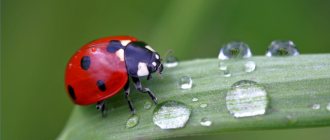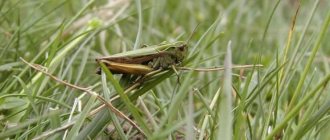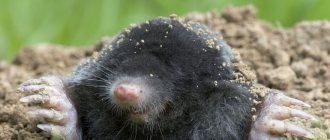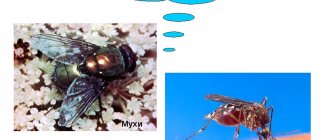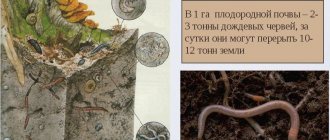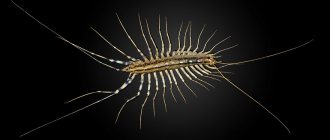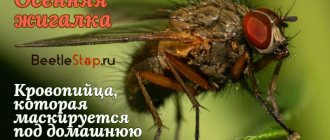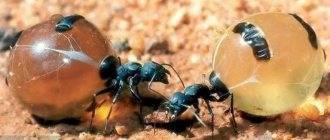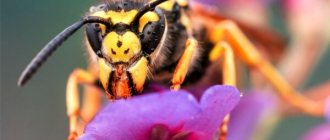- What do bumblebees eat?
The name of our today's hero - the bumblebee - came about thanks to the sounds that it usually makes during the flight, such buzzing, wheezing, from them came the ancient Russian word “chmel”, which over time transformed into the familiar modern “bumblebee”. By the way, the name of another well-known flyer was formed in a similar way -
mosquito But back to bumblebees, scientifically speaking, a bumblebee is an arthropod insect and belongs to the subclass of winged insects, the family of true bees, the genus of bumblebees proper (Bombus in Latin).
Description, structure, characteristics
Bumblebees are very large and bright insects, and interestingly, the female bumblebee is larger than the male (which, however, is not such a rarity in the world of insects). Typically, the body length of a female bumblebee is from 13 to 28 mm, a male - from 7 to 24 mm. But some types of bumblebees, such as the steppe bumblebee, can reach large sizes, even up to 35 mm in length. The weight of a bumblebee, if it is a queen, can reach up to 0.85 g, but working individuals will be lighter - from 0.04 to 0.6 g.
An interesting fact - despite their absolute small weight, bumblebees are quite strong insects and can carry a load equal to their own weight.
The body of a bumblebee is thick and heavy, as for an insect, of course. The wings of a bumblebee are small, transparent and consist of two halves that move synchronously. The flapping speed of a bumblebee's wing is 400 beats per second. And the flight speed of a bumblebee can reach 3-4 meters per second.
The female bumblebee's head is somewhat elongated, while the male's is triangular in shape, with a noticeable dotted line on the crown and front part.
Bumblebees also have powerful mandibles, which they use to chew through plant fibers and to create honeycombs. They also serve the bumblebee for protection.
The eyes of a bumblebee are located in a straight line, they are not covered with villi. The antennae of males are longer than those of females.
An important organ of bumblebees is a special proboscis, which they use to collect nectar. The length of the proboscis depends on the type of bumblebee and varies from 7 to 19 mm.
There is also a sting in the abdomen of bumblebees, but only in females; the male does not have a sting, and in place of the sting there are dark brown genitals. The sting of a bumblebee is smooth, without serrations and invisible when at rest. So when bitten, the female bumblebee pulls the sting back and can sting repeatedly like wasps and
hornets, unlike bees, which die after being stung.
Bumblebees also have as many as six legs, while the female has a special “basket” for collecting pollen on the outer surface of her hind legs.
The color of the bumblebee is usually striped, black and yellow with white, orange and even red flowers. Sometimes there are completely black bumblebees. Scientists believe that the color of the bumblebee was created for a reason, but is associated with the balance and thermoregulation of the insect’s body.
How a bumblebee flies, flight speed
Looking at the size of the wings and body of this insect, many scientists are still confused about how a bumblebee flies, because the proportions do not obey aerodynamics. However, animals manage not only to fly, but also to do it quite quickly. The flight speed of a bumblebee is 4 m/s.
Wings make 300-400 movements per second
The whole secret is that insects not only flap their wings, but also rotate them (like helicopters), making 300-400 movements per second.
The process of the wings can be represented as follows:
- the upper part describes a thin oval at a large angle;
- in this case the wing turns over:
- when the movement is upward, part of the wing is directed downward;
- When the wing is lowered, a reverse flip occurs.
If we consider the flight of a bumblebee, taking into account the laws of physics, then the entire mechanism is represented by 3 components:
- slow disruption of air flow;
- capturing a passing stream;
- circular rotational movements.
It would be difficult for a bumblebee to control flight if the process did not involve the abdominal muscles, which alternately contract and relax.
Habitats
Bumblebees live almost everywhere, on all continents, with the exception of the cold
Antarctica. They are especially common in temperate latitudes, but there are certain species of bumblebees that live even beyond the Arctic Circle, in the tundra. Bumblebees are a frequent visitor in mountainous regions, but closer to the equator, in the tropics, there are not so many bumblebees; for example, only two species of bumblebees live in the Amazon forests. Also, at the beginning of the twentieth century, some species of garden bumblebees from Europe were brought to Australia and New Zealand, where they live to this day.
In general, bumblebees are the most cold-resistant members of the bee family. Despite the fact that they do not like the hot tropics very much, all this is due to the peculiarity of their thermoregulation, the fact is that the normal body temperature of a bumblebee can reach 40 degrees Celsius, exceeding the ambient temperature by 20-30 degrees. This increase in temperature is associated with the rapid contraction of the bumblebee's chest muscles, the same contraction that is the source of its signature buzzing.
Characteristics
The bumblebee is a large insect whose diet includes pollen and nectar. Their competitive advantage over bees lies in their warm-blooded body. This feature was formed due to the fact that the pectoral muscle contracts at a rapid pace, dispersing blood. Therefore, the bumblebee is not afraid of frost, that is, it leads a cold-resistant lifestyle.
Scientific classification:
- domain – eukaryotes;
- kingdom - animals;
- phylum – arthropods;
- class - insects;
- order - Hymenoptera;
- family - real bees;
- genus – bumblebees (Bombus).
Interesting! Now there are fifty subgenera and about 300 species of these Hymenoptera. Close relatives are considered to be “basket” bees, which include honey bees, orchid bees and stingless bees.
At first glance, a bumblebee looks like a bee, but the adults still do not resemble each other in everything. The main difference is the thickness of the cover. The body of a bee is covered with sparse hairs, while bumblebees have a shaggy coat.
Characteristics:
- dense, thick body - wider than that of a bee or wasp;
- a smooth sting without serrations in females and working specimens;
- body length (size) – up to 3 cm;
- weight – worker up to 600 mg, uterus up to 1 g;
- color – black and yellow stripes, sometimes there are orange-red rings or completely black color;
- length of the proboscis is 7–20 mm (the task is to penetrate the flower for nectar).
Bumblebees are frost-resistant insects. The appearance of this feature is explained by the rapid contraction of muscles and the presence of thick integument. The hairs warm the body, so adults are not afraid to fly out in cold weather, early in the morning and late in the evening. To cool down in the heat, the bumblebee secretes a drop of saliva - this method helps facilitate flight due to the evaporation of liquid and cooling.
Nest
Bumblebee nests can be underground, on the ground, or above the ground; let’s look at them in more detail.
Nests underground
Many species of bumblebees build their nests underground, sometimes even nesting in the burrows of various rodents. Interestingly, the smell of mice attracts female bumblebees. Also in the mouse hole there is a lot of useful material for insulating a bumblebee nest: wool, dry grass, etc.
Nests on the ground
Some types of bumblebees, for example, Schrenk's bumblebee, forest and field bumblebees, build their nests on the ground: in the grass, under plants, even in abandoned bird nests.
Nests above ground
Some types of bumblebees prefer to make their nests above the ground: in tree hollows and birdhouses.
The shape of underground and above-ground nests can be different and depends on the cavity used by bumblebees. The nests are insulated with dry grass, moss, and reinforced with wax secreted by bumblebees using special abdominal glands. From this wax, bumblebees build a wax dome that prevents the penetration of moisture; it also masks the entrance to the nest to protect against the invasion of uninvited guests.
Nesting
Rook's nest
Depending on the region, the nesting season lasts from early March to May. For nests, birds choose tall trees located on the outskirts of settlements, the edge of forests, and near the river.
They gather in large colonies called rookeries, which can number from several dozen to hundreds of nests. Rooks are very attached to the place chosen for nesting.
Colonies often have a leader - an old and experienced bird. If she signals danger, the entire flock takes off and flies away. There is a strict hierarchy in the rookery - adult birds are located in the middle, young birds settle on the branches on the sides.
To build nests, thin twigs, straw, dry grass, bark and small debris are used. Typically, males bring the material and females arrange and weave it. The nests last for several years and, if necessary, are updated and completed.
Lifestyle in nature
Bumblebees, like other insects of the bee family, are social creatures and live in families consisting of:
The queen is responsible for reproduction, although in her absence, female workers can also lay eggs. The bumblebee family is not as large as the bee family, but still numbers 100-200, and sometimes as many as 500 individuals. The life cycle of a bumblebee family usually lasts from spring to autumn, after which the family breaks up, some of the females go to winter to begin a new life cycle in the spring.
In the bumblebee family, each has its own specific responsibilities: working bumblebees get food, feed the larvae, arrange and protect the nest. At the same time, among working bumblebees there is also a division of labor, so larger representatives fly for food, and smaller ones feed the larvae.
The function of males is simple and clear - fertilization of females. The queen of the bumblebee, she is also the female founder of the family, lays eggs, feeds the larvae, and generally takes care of the offspring.
The difference between a bumblebee and a hornet, who is stronger?
There are other representatives of striped individuals in the bee family. People sometimes confuse them, believing, for example, that a hornet and a bumblebee are one and the same. Although they even have external differences.
Hornet
Note! Despite the fact that the hornet is a large individual (up to 5 mm long), in appearance it is more similar to a wasp, but does not have such a narrow waist. The insect’s body also lacks a fur coat.
The two representatives of the family also differ in their disposition. Bumblebees are peace-loving creatures and attack only as a last resort. Hornets are aggressive and don't even need a reason to sting. At the same time, the bite is painful and much more poisonous than that of a bumblebee.
Hornets, like wasps, do not produce honey, but actively attack hives. At the same time, they do not hesitate to feast on the bees themselves, gnawing off their heads. Aggressors also feed on other insects and can even attack small animals.
Hornets try not to fight bumblebees, knowing that they will receive a worthy rebuff. Although hairy insects are inferior in strength to pests.
Reproduction
Bumblebee reproduction has four stages:
- Egg.
- Larva.
- Doll.
- Imago (aka adult).
With the beginning of spring, the queen, which has overwintered and is fertilized in the fall, flies out of her shelter and within several weeks is actively preparing for nesting. Having found a suitable place for the nest, the queen begins construction. In a newly built nest, the queen lays 8-16 eggs, which have an elongated shape.
After 3-6 days, bumblebee larvae appear, they grow quickly, feeding on food brought by the female.
After 10-19 days, bumblebee larvae begin to weave a cocoon and pupate. After another 10-18 days, young bumblebees begin to emerge from the cocoons, gnawing at them. By the way, later empty cocoons can be used to store honey or pollen. After the appearance of the first offspring, 20-30 days after the eggs were laid, the queen almost never leaves the nest. The responsibilities for obtaining food are taken over by its first children - working individuals who also perform all other important functions.
As for born males, 3-5 days after formation into an adult, they leave their parental nests in search of other nests and other queens, with whom they will mate in the fall, during the mating season of bumblebees.
How long does a bee live?
The lifespan of a bee directly depends on its place in bee society, as well as the time of birth.
How long does a worker bee live? Her lifespan is not long, and if she was born in spring or summer, it usually averages only a month. Such a short life expectancy is due to the hard work that the worker bee does to obtain nectar.
If a worker bee is lucky enough to be born in the fall, then she can live even six months, since she needs to survive the winter cold in order to be responsible for collecting honey in the spring and take part in its accumulation.
The lifespan of a drone is even shorter than that of a worker bee; two weeks after birth, it already becomes capable of fertilizing the uterus, and what is most interesting is that a few days after this very fertilization, drones usually die. It also happens that with the end of the honey collection period and the onset of winter cold, worker bees at this point drive out the drones that are no longer needed from the hive, after which they also die.
The queen bee lives the longest in the bee community. Typically, the average lifespan of a queen is 5-6 years, but for this she needs to be a valuable female and regularly give birth to new offspring.
Types, photos and names
In nature, there are about 300 varieties of bumblebees; of course, we will not describe them all, but we will describe the most interesting representatives of the bumblebee world, in our opinion.
meadow bumblebee
It is also known as Bombus pratorum in Latin and lives almost throughout Europe, as well as in Asia (Kazakhstan, the Asian part of the Russian Federation, the taiga, the Urals, and Siberia). It is small in size: females reach 15-17 mm in length, working individuals 9-14 mm. The head is dark, and behind it is a bright yellow collar. They are interesting because it is the bumblebees of this species that are the first to fly out of wintering in the spring. They nest on the surface of the ground or in bushes.
urban bumblebee
This bumblebee lives throughout Eurasia, from Ireland in the West to Sakhalin in the East. A very small representative, the female’s body length is 10-22 mm, workers’ body length is 9-15 mm. It is distinguished by a red breast, and on the abdomen it has a black band and a white tip.
Steppe bumblebee
It is a very large representative of the bumblebee family, the body length of females reaches 32-35 mm. Has almost square cheeks. The color of the steppe bumblebee is paleish-grayish-yellow with a black band between the wings. This bumblebee lives in Eastern Europe, including Ukraine, Asia Minor, Northern Iran, and Transcaucasia. The steppe bumblebee prefers flat, foothill and mountain steppes. It makes nests in rodent burrows in the ground. Listed in
Red Book of Ukraine.
Bumblebee underground
This bumblebee is distinguished by its elongated proboscis, as well as its elongated body and love of warmth. Distributed in Eurasia, from Great Britain to the Urals. The yellow color of this bumblebee is duller than that of other bumblebee species. It has average sizes: females reach 19-22 mm, working individuals 11-18 mm. Interestingly, the underground bumblebee was one of four species of bumblebees brought from England to New Zealand for the purpose of pollinating the local clover. As its name suggests, it makes nests underground.
Moss bumblebee
Lives over a wide range: Eurasia, almost everywhere except the polar regions. Dimensions reach 18-22 mm, working individuals 10-15 mm. It has a bright yellow-golden color and an orange back. Builds ground-type nests.
Earth bumblebee
This bumblebee is distinguished by a back with a reddish-black band and a black upper chest. Females reach 19-23 mm in length, working individuals 11-17 mm. They live in Europe, western Asia and northwestern Africa. Interestingly, at the end of the twentieth century, a method for industrial breeding of this type of bumblebee was developed. The fact is that the ground bumblebee brings considerable benefits, helping to pollinate various crops (including tomatoes, eggplants, cucumbers, peppers and strawberries).
Armenian bumblebee
A rare representative of the bumblebee kingdom, in many countries, including in Ukraine, it is listed in the Red Book. Lives in Eastern Europe and Asia Minor. The body length of this bumblebee is 21-32 mm. It has brown wings and elongated cheeks.
forest bumblebee
A small representative of the bumblebee kingdom, with a slightly duller coloration than other bumblebees. Loves warmth, lives in dry meadows of forest-steppes. It builds nests on the surface of the earth from grass and moss, however, sometimes using warmed ones as nests.
sun holes of rodents.
garden bumblebee
Just like the underground bumblebee, it was once brought by the British to New Zealand, where it lives to this day. And besides this, you can meet the garden bumblebee across a wide range from England to Siberia. The uterus is 18-24 mm in length, workers are 11-16 mm. The breast of this bumblebee is yellow with a black stripe between the wings. It also has a very long proboscis and nests underground, in old holes left by rodents.
Common bumblebee
It lives in western Europe and is listed in the Red Book. It is black in color with two yellow stripes.
How to distinguish a female bumblebee from a male
Having studied the characteristics of the life of bumblebees, it is recommended to learn to distinguish them by gender. After all, it is the female that can cause more problems - by stinging, she injects a toxic substance into the wound.
Main differences:
- nature endowed the male with reproductive genitalia instead of a stinger;
- females are larger than males: their length is 13-28 mm (the male’s height is 7-24 mm);
- in females the head is slightly elongated, in males it is triangular and decorated on the front and parietal parts with a thin dotted line;
- The antennae of fertilizers are long, while those of worker bumblebees are barely noticeable.
Otherwise, the male is not much different from the female. He even participates in collecting nectar and building honeycombs until he matures to his main purpose.
Having learned everything about bumblebees, having found out what the difference is between representatives of bees, it is easier to navigate the surrounding nature. Thanks to the information received, ordinary people will understand how useful these insects are and will not destroy their nesting sites.
5 1 vote
Article rating
What to do at home if bitten by a bumblebee
Of course, it is best to simply prevent a bumblebee from being bitten; to do this, you just need to not try to pick up a bumblebee, but in nature, make sure that you don’t accidentally land on a bumblebee with your “soft spot.” But if a bumblebee bite does occur, then first aid should be as follows:
- The bitten area must be disinfected with an antiseptic,
alcohol or soap and water.
Vision
A bee has two types of eyes: three simple ones on the top of its head and two complex ones on the sides.
Bee eyes
Compound eyes are called compound eyes. They have a convex oblong shape. If you enlarge such an eye several times, you will notice a huge number of hexagons on the surface. Worker bees have about 6,000 of them.
Macro photography of compound eye
Each such cell is a peephole formed from visual cells. Due to the specific structure of the eyes, the bee sees the image less clearly - it resembles a picture divided into separate dots. She finds it easier to watch moving images than static ones.
How bees see
Simple eyes have a similar structure, but they are too poorly developed to perceive images. Their function has not been reliably studied, but most likely, with the help of simple eyes, insects distinguish between light and darkness.
Interesting Facts
- Bumblebee farming is an important branch of agriculture; bumblebee breeding is actively practiced to increase crop yields.
- Previously, it was believed that, according to the laws of aerodynamics, a bumblebee was simply not capable of flying and its flights, seemingly contrary to the laws of physics, surprised scientists. However, one Zheng Jane Wang, a physicist from Cornell University in the USA, was able to explain the mechanism of bumblebee flight to the principles of aerodynamics.
- In the morning hours, a curious character appears in the bumblebee nest, the so-called trumpeter bumblebee, buzzing loudly. Previously it was believed that in this way he raises his relatives to work. But later it turned out that in such a simple way (with the help of the work of the pectoral muscles) this bumblebee simply warms up in the predawn, the coldest hours.
Video
And in conclusion, an informative video about bumblebees.
Author: Pavel Chaika, editor-in-chief of Poznavaika magazine
When writing the article, I tried to make it as interesting, useful and high-quality as possible. I would be grateful for any feedback and constructive criticism in the form of comments on the article. You can also write your wish/question/suggestion to my email [email protected] or Facebook, with respect, the author.
Author page
Why are they useful?
In nature, this is an irreplaceable insect. But not everyone fully understands how useful it is:
- This is an excellent pollinator.
- Due to its resistance to cold and frost, this species is able to provide pollination where other insects do not have the opportunity to do so.
- Not everyone knows that some beekeepers and even gardeners breed bumblebees. This is done in order to improve the technical characteristics of crops - to pollinate early plants or in a greenhouse. It must be borne in mind that bumblebees are less aggressive than bees. Therefore, they are easier to manage to create additional pollination conditions.
- They also sell bumblebee wax.
Little child points a finger at a bumblebee on a flower. Baby discovering nature.
As can be seen from this material, bumblebees are a valuable species of insects, many of which ended up in the Red Book due to unreasonable human activity. Preserving them is the direct responsibility of today’s generation in order to leave a full-fledged nature for our descendants.
